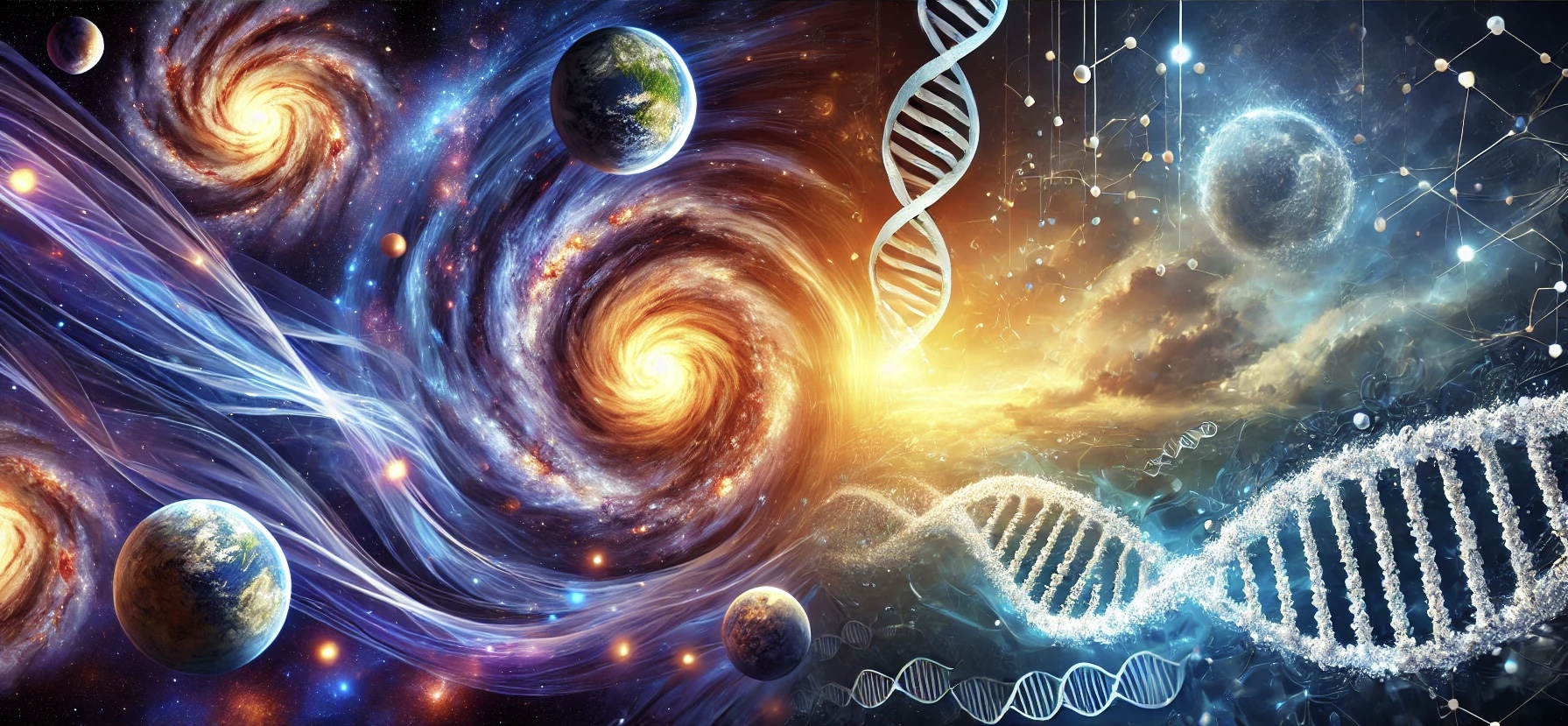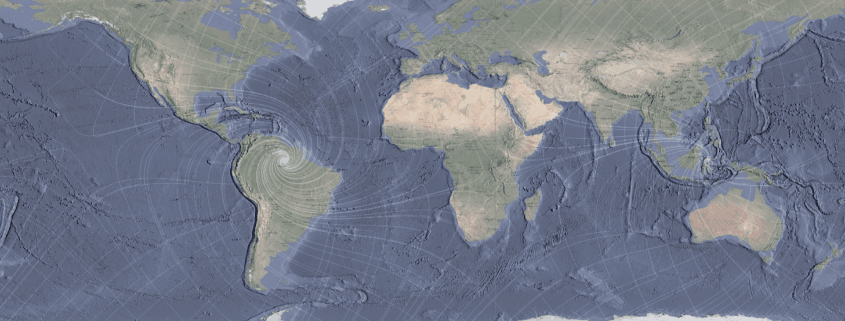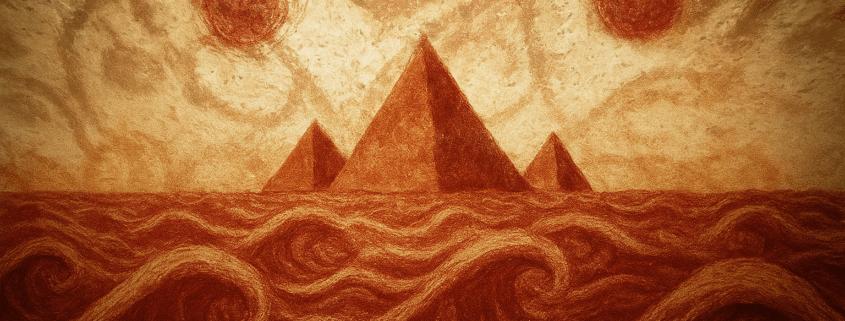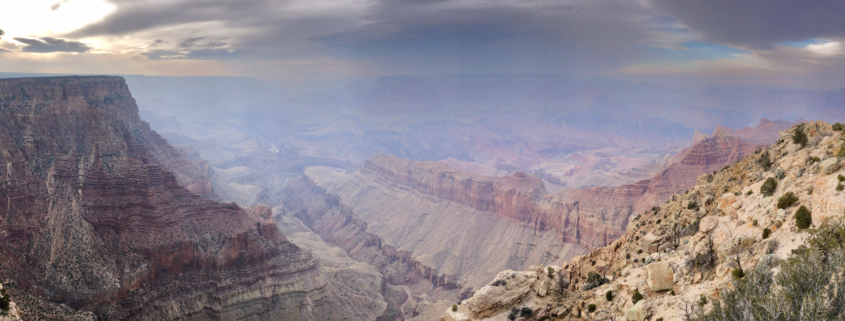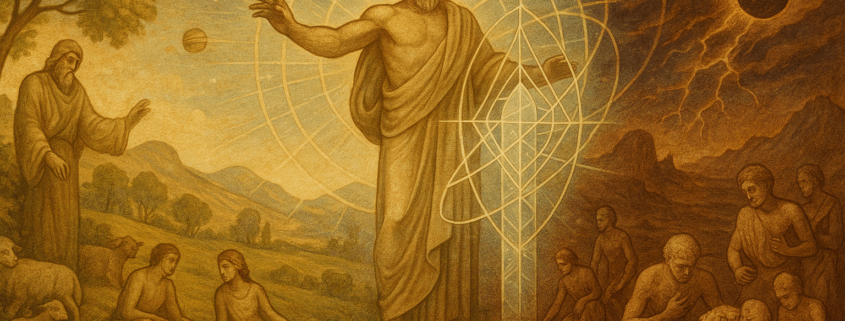Harmony from Chaos: How Entropy Shapes the Universe’s Hidden Order
I. Introduction
It is one of the great paradoxes of science: how does the universe—guided by the Second Law of Thermodynamics, which mandates increasing entropy—create such stunningly ordered systems? From the spiraling elegance of galaxies to the precise folding of proteins, order seems to arise from the very chaos that entropy suggests should dominate.
This paradox, however, dissolves when we examine the interplay between entropy and resonance. Far from being a force of destruction, entropy often drives systems to evolve into states that maximize energy dispersal in the most efficient, organized way possible. Resonance, the phenomenon where systems synchronize to enhance energy transfer, emerges as the key to understanding how order arises. This article explores the role of entropy and resonance in creating harmony across nature, from the cosmic to the molecular, and how these forces might shape Earth’s cataclysmic cycles.
II. Understanding Entropy and the Second Law of Thermodynamics
Entropy is often misunderstood as a force of chaos. In reality, it is a measure of how energy disperses within a system, with nature tending toward configurations that allow energy to spread as widely and efficiently as possible.
The Second Law of Thermodynamics governs this process, stating that in an isolated system, entropy must always increase. However, this does not forbid localized order. Instead, systems far from equilibrium—where energy flows constantly into and out of them—can self-organize to enhance energy dissipation. Such systems are called dissipative structures, examples of which include hurricanes, convection patterns, and living organisms.
III. Resonance as a Pathway to Order
Resonance is a system’s ability to enhance energy transfer by aligning with specific frequencies or configurations. Whether it’s a string vibrating at its natural frequency or planets locking into orbital rhythms, resonance enables efficient energy flow while minimizing chaotic interference.
In nature, resonance works hand in hand with entropy to transform chaos into harmony. As systems evolve, they settle into resonant states that allow them to dissipate energy more smoothly and predictably. This phenomenon underpins the emergence of organized structures across scales, from atomic interactions to planetary orbits.
IV. Examples of Order Emerging from Chaos
A. Astrophysical Systems: From Chaotic Dust to Harmonious Orbits
In the early universe, regions of gas and dust were turbulent and chaotic. Over time, gravitational forces pulled matter together, collapsing these clouds into protostars. The energy radiated during this process created localized order: stars and their accompanying planetary systems.
Within these systems, chaos continues to resolve into order through resonance. For example, Jupiter’s moons Ganymede, Europa, and Io are locked in a 1:2:4 orbital resonance, ensuring their orbits remain stable. This resonant configuration minimizes energy conflicts, allowing the moons to dissipate gravitational energy efficiently.
B. Fluid Dynamics: Patterns in Motion
When a fluid is heated from below, random molecular motion initially dominates. Yet, as the system approaches a critical temperature gradient, chaos gives way to structure. Hexagonal convection patterns, known as Bénard cells, emerge to optimize heat transfer from the bottom to the top of the fluid.
Similarly, hurricanes self-organize into spirals that dissipate thermal energy from warm oceans to the cooler upper atmosphere, forming one of nature’s most recognizable patterns of ordered chaos.
C. Biological Systems: DNA and Life’s Efficiency
Life itself is a testament to entropy-driven order. DNA, the molecule of inheritance, arose from a chaotic prebiotic environment. Over billions of years, mutations introduced variability, which evolution refined into increasingly efficient genetic codes.
Beyond the sequence of DNA, life exhibits intricate systems that optimize energy flow. Metabolic pathways, for instance, are finely tuned networks that convert food into usable energy with minimal waste—a biological equivalent of resonance.
D. Collective Behavior: Flocks and Schools
In animal groups, seemingly chaotic individual actions resolve into coordinated movements. Birds in a flock or fish in a school align their movements through simple rules: maintain distance, align direction, and stay close to neighbors. These local interactions create emergent global order, allowing the group to conserve energy and avoid predators more effectively than individuals could alone.
V. The Fourth Law: Resonance, Entropy, and Cataclysmic Cycles
If resonance and entropy work together to drive the emergence of order, they may also underpin Earth’s periodic cataclysmic cycles. These cycles—evident in geological, climatological, and even biological records—may reflect the Earth’s natural response to energetic stresses and periodic shifts in resonance.
A. Mechanisms Driving Cataclysmic Cycles
- Resonance with Celestial Forces: Gravitational interactions, orbital alignments, and planetary harmonics periodically amplify stresses on Earth. Orbital resonances (e.g., Milankovitch cycles) can synchronize climatic shifts, while gravitational resonances from planetary alignments might induce tectonic or magnetic disturbances.
- Internal Feedback Loops: Earth’s internal systems (e.g., mantle plumes, magnetic fields) may resonate with external drivers, amplifying their effects. For example, geomagnetic excursions or pole shifts might weaken the magnetosphere, exposing Earth to increased cosmic radiation and triggering rapid climate or biological change.
- Cyclical Energy Thresholds: As Earth approaches critical energetic thresholds—such as heat buildup in the mantle or atmospheric imbalances—these systems may reorganize through cataclysmic events to optimize energy dissipation.
B. Effects of Human Interventions
Human efforts to mitigate or delay natural cycles may inadvertently disrupt or amplify these processes:
- Geoengineering: Attempts to stabilize the climate could delay critical thresholds, leading to larger, more abrupt reorganizations.
- Tectonic and Geomagnetic Modifications: Activities such as mining, fracking, or future magnetic field manipulations may interfere with Earth’s natural cycles, risking unintended consequences.
- Technological Feedbacks: Expanding global electrical grids and AI-driven systems might synchronize with natural resonances, amplifying geomagnetic or climatic disturbances.
C. Long-Term Implications
Efforts to suppress Earth’s cycles may prove futile or counterproductive. Instead, aligning human systems with natural rhythms—through adaptive infrastructure, local energy systems, and sustainable practices—might reduce the severity of disruptions without attempting to halt them entirely.
VI. Implications for Universal Principles
Entropy, far from being purely destructive, is a creative force that drives systems to optimize energy dissipation through resonance. This insight suggests that periodic reorganizations—whether in Earth’s systems or in the cosmos—are not anomalies but essential aspects of a self-regulating universe.
The Fourth Law, as a principle of emergent harmony, invites us to view entropy not as an adversary but as a partner in shaping the intricate beauty of natural systems. This understanding offers a framework for anticipating, adapting to, and living within the rhythms of a dynamic and ever-changing Earth.
VII. Conclusion
From the orbits of planets to the intricate folds of DNA, nature reveals a profound truth: chaos is not the enemy of order but its catalyst. The interplay of entropy and resonance transforms disorder into harmony, driving the cycles of creation and destruction that define our world.
If humanity can learn to work with these rhythms rather than against them, we may find not only survival but a deeper connection to the forces that sustain life and structure the universe. This perspective challenges us to embrace the Fourth Law as both a scientific principle and a guiding philosophy for navigating an uncertain future.


